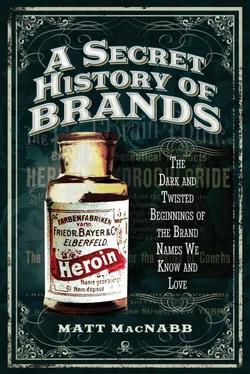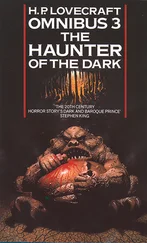It wasn’t long after those games that Nazi Germany began expanding their territory and became engulfed in all-out war. Inevitably, the landscape of the German economy began to change as the Second World War raged on. The only way Hitler could continue his reign of terror on Europe was to completely convert the whole of Germany into an industrial war complex. The ‘total war’ economy began to emerge, as all manufacturing began to move away from luxury items, and focussed instead on producing the various elements of war. In December of 1943 Hitler officially ordered all civilian business operations to cease and converted them to military manufacturing. The Dassler brothers were no longer creating sports shoes, but instead began to make boots for Nazi soldiers and Panzerschreck bazookas in their Herzogenaurach factory. The weaponry that the Dasslers were producing for the German military were intended as anti-tank strategy, desperately needed on the front lines at the time.
Adi and Rudolf were a valuable asset to Germany’s manufacturing, but even so, the war eventually raged on so long and so hard that even they were called to duty. The brothers were both over the age of 40 at the time. Adi was allowed to return to the factory within a year, so that he could ensure production would continue smoothly. Rudolf wasn’t so lucky, he had to remain an active part of the German military regime. It is said that he went on to join the infamous Gestapo, the Nazi secret police, a claim that he would both give credence to, and refute, after the war.
Sibling Rivalry – Two Companies
The stories surrounding why the Dassler brothers had a parting of ways vary greatly and there are a lot of urban legends surrounding the circumstances. The only thing that we know for certain is that the two would part ways in 1948, never to reconcile again. The complications of being in business together, and differences in politics, would drive a wedge between the brothers.
Allied troops began to close in on Germany and eventually, in 1945, the war came to Herzogenaurach. Rudolf wasn’t there when Allied bombers targeted their town, but his family was. The sirens began to blare and the bombs were falling, destroying much of the town in the process. The Nazis had subjected England to the same fate, but the tide had begun to turn against them. The Nazis were about to fall and the Dassler family began to fracture and split under the stress and strain of war. The story goes that Adi and his family hid in the basement along with Rudolf’s wife and children. One particular time, Adi, Käthe, and their son were the last to find refuge in the shelter. Adi was pacing with a nervous anger, grumbling the phrase, ‘back again…the swine’. Friedl was convinced that Adi was referring to her and her children, rather than the Allied forces. It had to be stressful to be without Rudolf during those trying times, so it’s not surprising that her mood was heightened. This incident is said to have further soured the already tense relationship between the two families.
Due to their complementing personalities as brothers, Adi had always left a lot of the business up to Rudolf. When Adi married Käthe he found someone with a strong personality, similar to his beloved brother. Unfortunately, Rudolf and Käthe did not get along. Rudolf was often a tyrant to Käthe and the two would constantly experience conflict within the family business.
The Post-War Escape
It was during the aftermath of the fall of Nazi Germany that some of the risky decisions made by the Dassler brothers during the 1936 Olympics would come back to help them. The Second World War was coming to a close and Rudolf could finally return home to Herzogenaurach. The Allied troops were making their way through Germany and the surrounding areas, destroying all of the factories that had been producing instruments of war for the Nazis. The Americans set their sights on Herzogenaurach in April of 1945. The story goes that the troops rolled into town and it was Adi’s wife Käthe, whose ingenuity and quick thinking, saved the family business from certain destruction. The story goes that the Americans had pulled their tanks right up to the front of the Dassler Brothers factory and were preparing to destroy the building. Käthe Dassler was a woman with a gentle and kind face. She could also be quite charming and persuasive when the situation called for it and the tense moments that she encountered that fateful day outside of the factory were probably the most urgent of her life. Käthe was somehow able to charm the American soldiers into leaving their factory standing, convincing them that they only produced footwear and weren’t a part of the Nazi war machine, which couldn’t have been further from the truth.
The close call that the Dassler family experienced wasn’t the last of it. Germany was far from a peaceful place in the period following the Second World War. The Allies were busy interrogating anyone who could have been involved with the Nazi regime and were imprisoning citizens in droves. Eventually, the Americans came to interrogate Adi. Adi also charmed the military interrogators, being sure to punch home the fact that he had equipped American athletes, such as Jesse Owens, at the Olympics. This impressed the Americans and he was released; he was a free man.
It was no longer business as usual for the Dassler brothers, as each brother wanted to be in charge and felt that there was only room for one. They then had to decide who would run the company as it re-established itself in post-war Germany. Rudolf was also interviewed by the Americans about his denazification, but his experience wouldn’t go quite as smoothly as Adi. It is important to note that Adi served the Nazi regime in the military for one year, while Rudolf had remained an active member of the Nazis until the end of the war. Rudolf’s past as a Nazi was an issue that he had to address to the interrogators and he was quickly in a fight for his factory and his future. He foolishly and boldly declared to his interrogators that he had worked for the Nazi Gestapo, but would later retract his statements. These impulsive actions showed a man frustrated by the devastating German loss in the war. He was clearly more emotionally invested in the war efforts than his brother.
Rudolf was subsequently sent to an American internment camp. It was while he was there that he began to become suspicious about how he had ended up there. An American told him that he had been denounced by someone close to him, and he suspected that Adi and/or his wife Käthe were the originators of a conspiracy. The thought of this enraged him and a lifelong grudge was born. It was a grudge that would change the Dassler family and the shoe industry forever. He had long distrusted his sister-in-law and it wasn’t a stretch for him to think that she was behind it all. Rudolf had always found her to be manipulative and desirous of too much control of the company. He had no proof of course, but that didn’t matter. He told the Americans that his internment had to be from false accusations and after a year in the camp, Rudolf was finally released and able to return home to Herzogenaurach and his family.
During the time that Rudolf was away, Adi went looking for new business opportunities. He began making baseball and basketball boots for the Americans, which allowed the Dassler Brothers to survive during those difficult post-war repair days. American sports were a major focus of the company for the first time. Adi and his wife had been running everything in Rudolf’s absence, while his wife Friedl had to sit by almost powerless, just trying all she could to protect her husband’s stake in the company. Adi managed to grow quite a lot as a craftsman and became an expert in modernising sports’ gear.
Читать дальше












